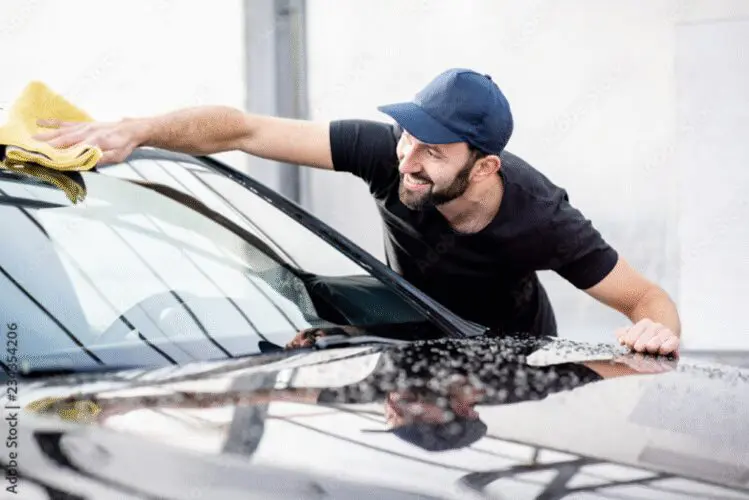6 Hidden Roles of Auto Glass in Vehicle Safety

Most drivers think of auto glass as nothing more than a shield from wind, rain, or road debris, but it plays a far greater role in keeping everyone inside the vehicle safe. The role of auto glass in vehicle safety extends to crash protection, visibility, and even the performance of advanced driver assistance systems. Designers create every windshield and window to work as part of a larger safety structure that holds the vehicle together during an impact.
Ignoring small cracks or chips can quietly undermine that system. Over time, damaged glass can weaken the frame’s rigidity and interfere with airbag deployment or sensor accuracy. In the sections below, we’ll uncover the many ways a car’s auto glass protects its drivers and passengers.
1. Keeps Occupants Inside the Cabin During a Crash
One of the most important yet often overlooked safety functions of vehicle glass is its ability to keep passengers inside the cabin during a collision. When a crash occurs, the windshield acts as a structural barrier that helps prevent ejection through the front of the vehicle. This protective function depends on how securely the glass is bonded to the frame.
Modern standards, such as the Federal Motor Vehicle Safety Standard 212 on Windshield Mounting, require windshields to remain attached to the vehicle structure during impact. The regulation ensures that the adhesive and installation process provide enough strength to hold the glass in place, even under crash-level forces. This retention is critical because ejection greatly increases the risk of severe injury or death.
2. Strengthens the Roof and Prevents Collapse
A securely bonded windshield adds strength to the roof structure and helps it resist collapse during a rollover. This reinforcement works in tandem with federal safety standards such as the Federal Motor Vehicle Safety Standard 216 on Roof Crush Resistance, which specifies how much force a vehicle’s roof must withstand to protect occupants when it comes into contact with the ground.
Properly installed windshields and surrounding glass strengthen the load path, transferring force around the cabin and preventing the roof from caving in. Because the glass joins with the pillars and roof structure, a secure glass installation supports this roof resistance role.
3. Works With Airbags to Cushion Impacts
The windshield is part of the restraint system that helps airbags protect passengers. During a collision, the passenger-side airbag deploys from the dashboard in a fraction of a second. It inflates at speeds that can exceed 300 kilometers per hour and needs a solid surface to direct it toward the occupant. The windshield provides that surface, allowing the airbag to spread out properly and cushion the passenger instead of inflating upward or outward.
For this reason, technicians must bond the glass securely to the vehicle’s frame. If they use the wrong adhesive strength or the bond weakens, the windshield may separate from the body when the airbag deploys. That failure can cause the airbag to lose its position and reduce its ability to protect the person in the seat.
4. Ensures Visibility and Optical Safety
Clear vision is one of the most important parts of safe driving. Engineers design the windshield to provide drivers with an unobstructed, accurate view of the road, helping them react quickly to changing conditions. When chips or cracks appear, they compromise that clarity. In areas with frequent temperature swings, heavy traffic, and loose road debris, these issues can worsen quickly. Timely windshield repair and replacement from a trusted auto glass service keeps the glass properly aligned and prevents small defects from distorting light or blocking a driver’s view.
Even minor imperfections can scatter light, especially at night or when the sun hits the glass at an angle. Poor installation creates similar risks, bending light unevenly and producing optical distortion that causes eye strain and slower reaction times. These issues can be subtle, but they effectively reduce the driver’s ability to respond quickly to hazards.
5. Supports Sensors and Advanced Safety Systems
Modern vehicles rely on advanced driver assistance systems, or ADAS, to help prevent accidents and reduce driver workload. Sensors and cameras—often mounted directly on or behind the windshield—power features like lane departure warning, forward collision alert, and automatic emergency braking. For these systems to work correctly, the glass must have precise optical clarity and positioning. Even a small shift in alignment or a difference in glass thickness can affect how the sensors read the road.
When a windshield is replaced, the camera and sensor systems must be recalibrated to ensure accurate detection of lanes, vehicles, and obstacles. This process requires specialized equipment and careful adjustment to restore the vehicle’s safety functions. Poor calibration or using the wrong type of replacement glass can cause the systems to misread their surroundings, leading to late warnings or unnecessary braking.
This is where the importance of professional installation becomes clear. A qualified technician ensures the new windshield meets manufacturer specifications and recalibrates the sensors before returning the car to the road. Without this precision, the technology meant to assist the driver may fail to operate as intended.
6. Reduces Noise, UV Exposure, and Driver Fatigue
Beyond its role in crash safety, auto glass also contributes to a quieter and more comfortable driving experience. Modern laminated windshields are made with a thin inner layer that not only holds the glass together during impact but also acts as a barrier to sound and sunlight. This layer helps reduce outside noise from wind, traffic, and vibration, creating a calmer cabin environment that allows the driver to stay focused on the road. The acoustic dampening effect of laminated glass has been well documented in materials testing, where the plastic interlayer absorbs sound waves instead of letting them pass directly into the cabin.
The same laminated structure helps filter ultraviolet radiation from the sun. Limiting UV exposure protects the interior materials from fading and reduces glare-related eye strain, especially during long daytime drives. This layer of auto glass protection adds to overall comfort and prevents the gradual fatigue that can set in when the cabin is too bright or noisy.
Caring for Auto Glass After Replacement
Once new glass is installed, its safety performance depends on how it’s cared for in the days that follow. The bonding materials and seals need time to cure, and proper post-replacement aftercare helps that process succeed. Simple steps taken early on can make the difference between a secure installation and one that develops leaks or weak points over time.
Good maintenance habits are straightforward but essential. Avoid high-pressure car washes or slamming doors soon after installation, since sudden force or vibration can stress the seal before it fully sets. Keep the edges of the glass clean and watch for signs of moisture or air leaks around the frame. Allowing enough time for the adhesive to cure before exposing the vehicle to extreme heat, cold, or impact ensures that the glass bonds firmly to the body.
Keep Your Auto Glass Working for You
Auto glass is built into the structure of a vehicle for a reason. It adds strength to the frame, supports safety systems, and maintains a clear line of sight in all conditions. When you install and maintain the glass properly, it does more than just look good — it helps the vehicle perform exactly as engineers designed it to during a collision or emergency.
The role of auto glass in vehicle safety is often underestimated because it works silently in the background. But its contribution is measurable: a secure bond keeps the cabin rigid, a clean surface preserves visibility, and a precise fit allows sensors to do their job. Good glass, installed the right way, keeps the vehicle stable and the people inside it protected.
Read more on
MyCarHeaven are on Instagram. Go check us out and do follow us.
Go visit the MyCarHeaven Instagram page. We post regular quality content, predominantly focused on classic cars, supercars, hypercars and car shows. We also feature all our competitions here, where you will have the chance IF YOU FOLLOW US and you follow the competition entry criteria, you could be in with a chance of winning tickets to the best UK car shows, and other automotive stuff.
Go to the MyCarHeaven Instagram account here. Advertisement
Advertisement Advertisement
Advertisement Advertisement
Advertisement Advertisement
Advertisement




